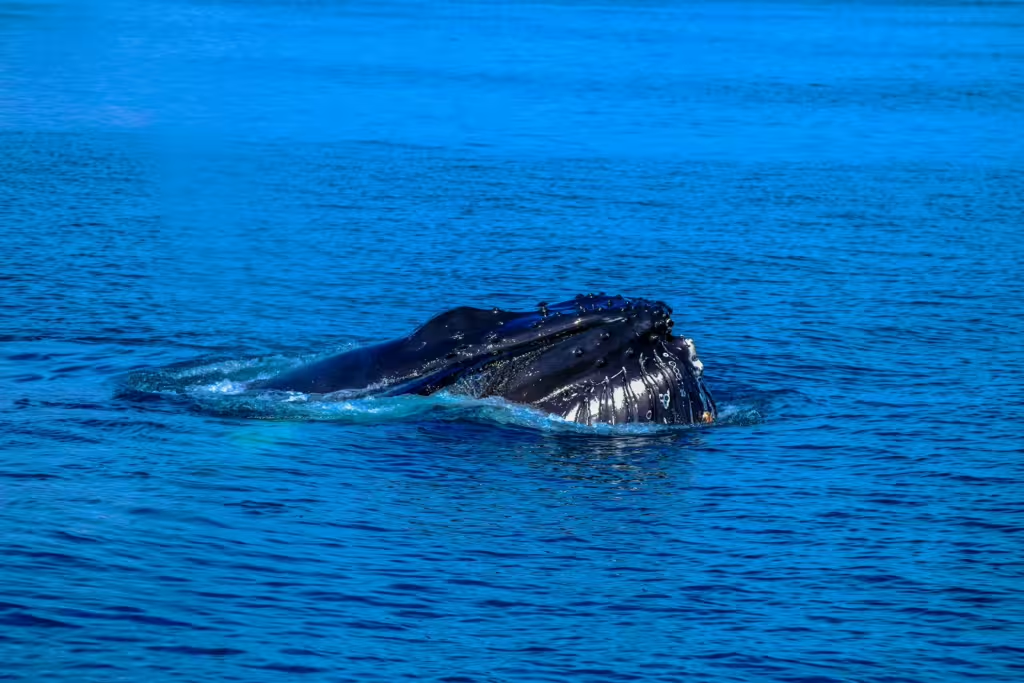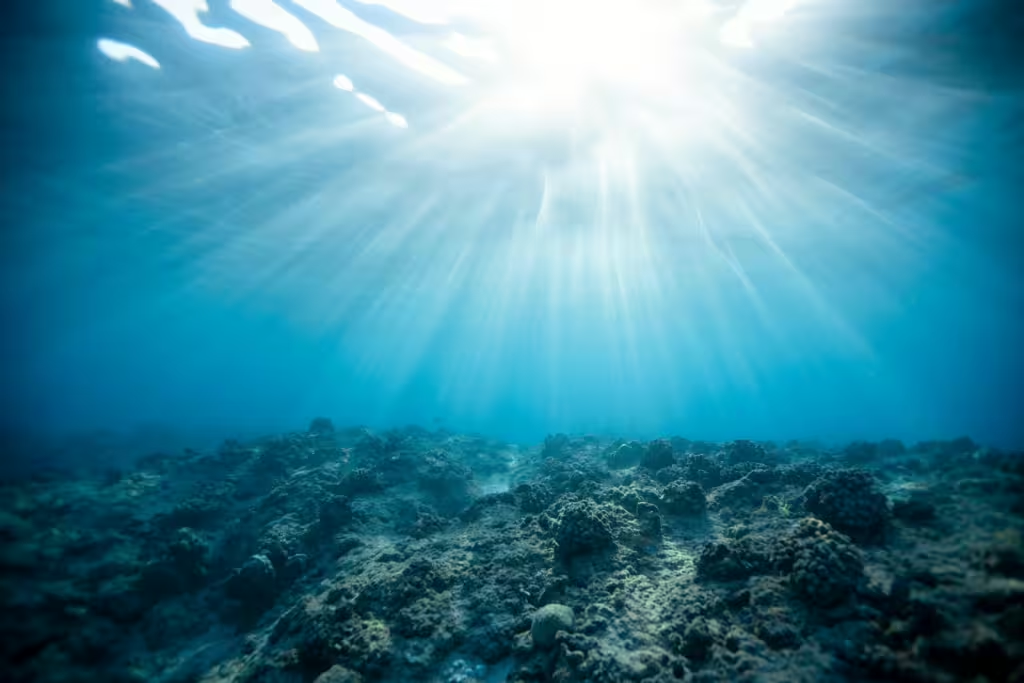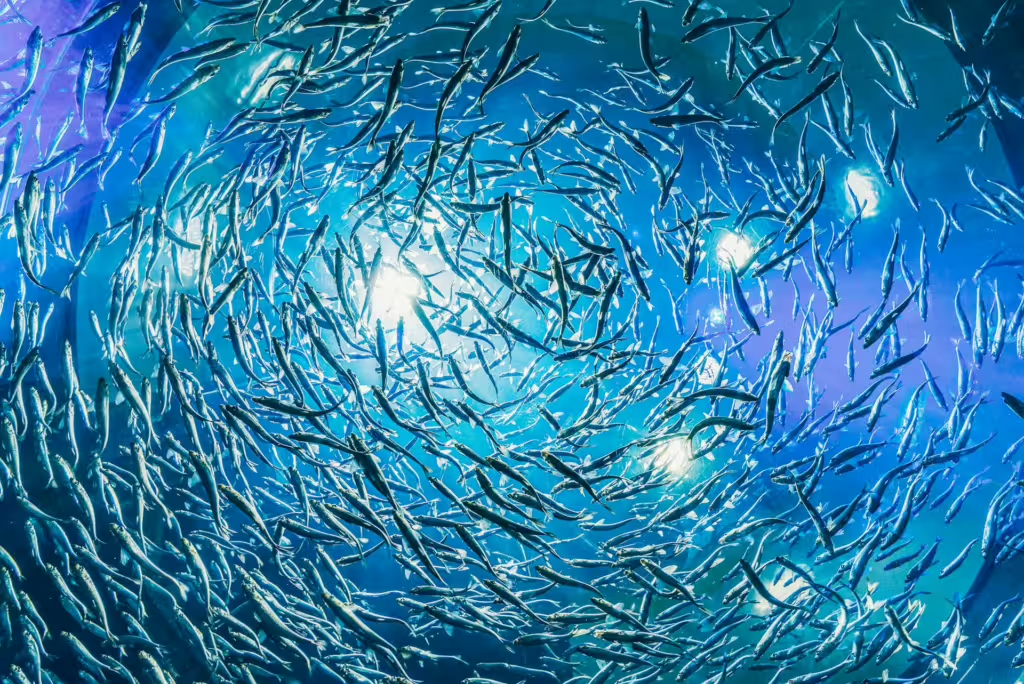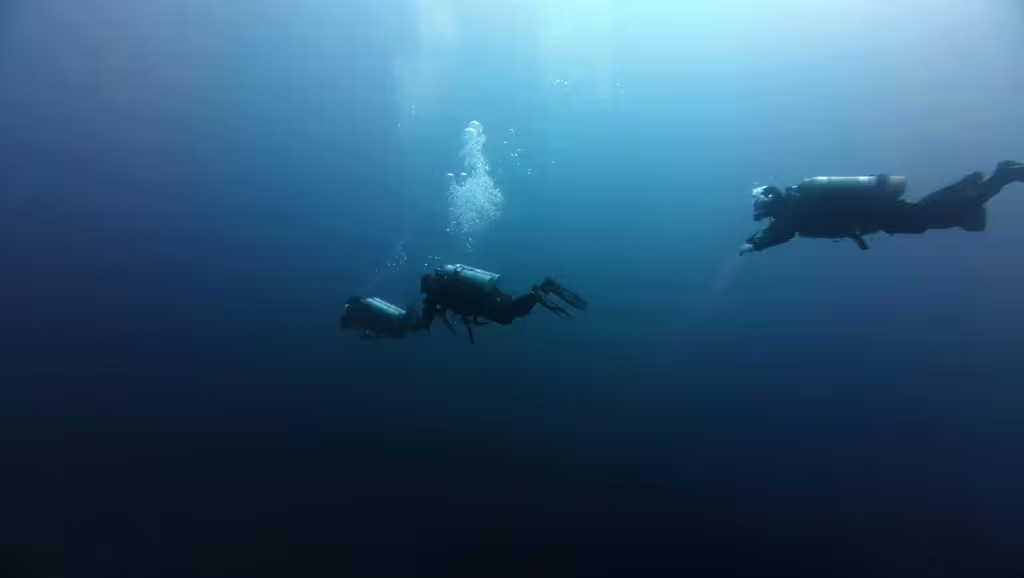The ocean covers more than 70% of our planet’s surface and contains 97% of Earth’s total water, not only does this make it astonishingly large, it also makes it the absolute biggest habitat on the planet. Yet not every fish, crab, and plankton are floating around in the same area. In fact, there are many different ecosystems throughout this much larger one; each of them home to a unique array of animals, plants, and specific adaptations.
That’s right, beneath its shimmering surface of our planet’s oceans lies a world divided into distinct layers, or zones, each with unique characteristics, light levels, temperatures, and ecosystems all their own. These zones—ranging from sunlit shallows to pitch-black abysses—host an astonishing variety of life forms that have evolved to face the challenges and opportunities of their environment.
In this article, we will explore the five main ocean zones: the sunlight (epipelagic) zone, twilight (mesopelagic) zone, midnight (bathypelagic) zone, abyssal (abyssopelagic) zone, and the hadal zone. As we make our way deeper into the abyss, we will stop to marvel at the fascinating creatures that call each layer home. By the end, we have no doubt that you will learn a great deal about what the oceans truly have to teach each and every one of us.

The Sunlight Zone (Epipelagic Zone)
Depth: Surface to ~200 meters (656 feet)
Light: Full sunlight
Temperature: Warmest, varies by location
Pressure: Low
The first zone we will discuss today is the sunlight zone, scientifically referred to as the epipelagic zone. In this, the ocean’s uppermost layer, enough sunlight penetrates far enough through the water’s surface to support photosynthesis. This the vast majority of ocean life is located within this zone and, as a result, the epipelagic zone also happens to be where most of the ocean’s primary productivity occurs. Phytoplankton—tiny plant-like organisms—use the abundant sunlight to produce energy, forming the vital base of the marine food web.
Marine plants such as algae and seagrasses also thrive in this zone, their continued presence creating complex habitats that support species diversity. At the same time, coral reefs, often described as the rainforests of the sea, are nearest to the surface as well. These are particularly important as they provide shelter, food, and breeding grounds for thousands of marine species. This zone is also critical for human beings, who rely on it for food. The sunlight zone supports fisheries and offers a number of recreational opportunities like snorkeling and diving.
Notable Creatures:
- Dolphins: Intelligent and social mammals, dolphins are common in the sunlight zone.
- Sharks: Apex predators such as the great white and hammerhead sharks patrol these waters as they search incessantly for prey.
- Sea Turtles: These ancient reptiles feed on jellyfish, seagrass, and sponges. Many are endangered.
- Flying Fish: Known for gliding above the water’s surface to escape predators, these wily, flittering fishies are a sight to behold when they rise up en masse.
- Tuna and Mackerel: Fast-swimming fish that travel in schools, these popular foods for human beings are vital to commercial fisheries.
- Jellyfish: Some species inhabit the sunlight zone and drift with ocean currents, though many can be found at lower levels as well.
Sadly, the sunlight zone also experiences the most direct impact from human activities such as pollution, overfishing, and climate change. We are closest to it and so any thoughtless act we perform that affects it is that much more detrimental to it, and the zones beneath it. What many of us don’t realize is that understanding and protecting this zone is essential for sustaining the ocean’s overall health and the services it provides for our very species’ continued survival.
The Twilight Zone (Mesopelagic Zone)
Depth: ~200 to 1,000 meters (656 to 3,280 feet)
Light: Dim, not enough for photosynthesis
Temperature: Decreases rapidly with depth
Pressure: Increases significantly
Once you go down about another 1,000 meters, you may find yourself entering the actual Twilight Zone. Not to be confused with Rod Serling’s groundbreaking television series, this twilight zone is actually referred to as the mesopelagic zone in scientific circles. Here, sunlight dwindles to a faint glow, creating a mysterious twilight world. The environment also becomes colder and darker, and many creatures have evolved unique adaptations such as bioluminescence as a result.
Believe it or not, if the zone above is good for the proliferation of ocean life, this zone plays is crucial in the realm of carbon cycling. Many mesopelagic organisms participate in diel vertical migration, which means they ascend at night to feed in the upper layers and descend again during the day to avoid predators. This behavior helps transport carbon from the surface to deeper waters, a process that is absolutely critical in regulating Earth’s climate. In this uncertain time of rampant climate change, scientists have become increasingly interested in the mesopelagic zone. This is chiefly due to its potential in carbon sequestration and biodiversity conservation.
Notable Creatures:
- Lanternfish: One of the most abundant vertebrates on Earth, these small fish glow with bioluminescent photophores.
- Bristlemouths: Another highly populous group, bristlemoths are often equipped with light-producing organs of their own.
- Hatchetfish: With flattened bodies and downward-facing photophores, these strangely-shaped fish can evade predators from above.
- Squid: Including the glass squid, which can become nearly transparent.
- Snipe Eels: Long, slender eels that feed on small fish and plankton live here.
- Zooplankton: Many diel vertical migrators ascend to the epipelagic zone at night to feed and come back down at daybreak.
As interested as modern scientists are in the twilight zone, exploring the zone itself does pose some challenges. In terms of technology, it is challenging due to the changing conditions, but advances in deep-sea robotics and submersibles are gradually unveiling its secrets. As we learn more about the mesopelagic zone, we may yet discover that it holds the keys to solving some of our most pressing environmental challenges.
The Midnight Zone (Bathypelagic Zone)
Depth: ~1,000 to 4,000 meters (3,280 to 13,123 feet)
Light: Complete darkness
Temperature: Near freezing
Pressure: Extreme
Beyond the twilight zone lies the aptly named, midnight zone. Also known as the bathypelagic zone, this realm is entirely devoid of sunlight. It is a place of eternal night, where intense pressure can exceed 5,800 pounds per square inch. Despite these harsh conditions, life finds ways to flourish in the midnight zone, usually in highly unexpected ways.
The water in the midnight zone is understandably calm and silent. There are no waves here, no errant winds that blow, no extant sounds passing down through shallow waters. As a result, organisms have adapted to this stillness with features like slow movement and low-energy lifestyles. These latter adaptations are also a response to the limited food supplies in this zone. Many species are blind or have highly sensitive adaptations to detect vibrations and chemical cues, allowing them to live in this soundless abyss with relative ease. Predation strategies are unique—ambush tactics and bioluminescent lures are commonly witnessed. But the low availability of food, nutrients, and the like also means that every interaction is a potential battle for survival.

Notable Creatures:
- Anglerfish: Equipped with a bioluminescent lure, these features use this twinkling appendage to attract prey in the darkness.
- Gulper Eel: Features an enormous mouth to engulf (or gulp) down prey many times its size.
- Vampire Squid: Despite its fearsome name, the vampire squid is not a blood drinker. Instead, it feeds mostly on marine detritus.
- Deep-sea Jellyfish: Some species possess glowing tentacles to startle predators away from them.
- Tripod Fish: Rests on elongated fins on the seafloor, waiting for prey and ambling around when it needs to escape.
- Rattail Fish: Common scavengers with large heads and tapered bodies.
The midnight zone is, as one might expect, largely unexplored. In many ways, this deep and dangerous part of the ocean represents one of the last frontiers on Earth. Nevertheless, ongoing deep-sea missions continue to discover new species and ecosystems, highlighting the resilience and adaptability of life in every environmental niche. Studying these creatures provides scientists with insights into evolutionary biology and the possibilities of life in extreme environments on other worlds beyond our home planet.
The Abyssal Zone (Abyssopelagic Zone)
Depth: ~4,000 to 6,000 meters (13,123 to 19,685 feet)
Light: None
Temperature: Near freezing (2–3°C or 35–37°F)
Pressure: Over 600 times atmospheric pressure
The abyssal zone may sound as though its the very bottom of the barrel but it is, in fact, only the second deepest part of the ocean. This zone extends across much of the ocean floor, encompassing the abyssal plains—vast, flat regions covered in fine sediments. Few animals live here and those that do call it home are specially adapted to the frigid, high-pressure conditions.
The terrain of the abyssal zone has been shaped over millennia by underwater volcanoes, seamounts, and deep canyons. Food here is extremely limited, mostly arriving in the form of marine snow or occasional whale falls—dead whales that provide a sudden and rich food source. In addition, some regions host hydrothermal vents where chemical-rich water supports thriving communities based on a new kind of feeding; chemosynthesis.
Notable Creatures:
- Sea Cucumbers: These simple animals feed on detritus and organic matter that falls from above.
- Basket Stars: A type of brittle star with intricately branched arms. They are related to sea stars.
- Abyssal Grenadier: Also called rattails, these fish are common scavengers and live in the zone above as well.
- Polychaete Worms: Segmented worms that burrow through sediment and feed on detritus.
- Hadal Snailfish: Found near the edge of this zone, these unique animals are capable of withstanding immense pressures.
Scientific interest in the abyssal zone has grown in recent years…though not really for the right reasons. The main interest has to do with deep-sea mining concerns and its potential impacts for human comfort and technological advancement. This means that preserving the delicate ecosystems found here is going to prove difficult; especially in the face of naked, human greed. Nevertheless, it is crucial to the continued health of our oceans overall. Moreover, ecosystems like these are very slow to recover from disturbance and if they are damaged, it could be actual decades before normalcy returns; if it ever does at all.
The Hadal Zone
Depth: ~6,000 to 11,000 meters (19,685 to 36,089 feet)
Light: None
Temperature: Close to freezing
Pressure: Over 1,100 times atmospheric pressure
At the very bottom of the ocean (by our reckoning anyway) lies the hadal zone. This zone is found primarily in deep-sea trenches and troughs such as the Mariana Trench. It represents one of Earth’s most extreme environments—so deep that only a handful of manned and unmanned submersibles have ever gone far enough down to reach the bottom.
In this crushing environment, life has had to adapt in unbelievable ways. The combination of enormous pressure and minimal food has meant that creatures here tend to be small, soft-bodied, and uniquely structured to survive where few others plants or animals can. As expected, microbial life forms a crucial part of the hadal food web, breaking down organic matter and supporting the few larger organisms that dwell here.
Notable Creatures:
- Amphipods: Shrimp-like crustaceans that thrive in trench ecosystems.
- Hadal Snailfish: The Hadal Snailfish, referenced above, is the deepest known fish. It has been found living in the Mariana Trench at depths over 8,000 meters.
- Sea Cucumber Species: Certain sea cucumbers are specially adapted to pressure and low temperatures.
- Microbes and Extremophiles: The tiniest of critters are capable of surviving in high-pressure, low-nutrient conditions.
Due to its inaccessibility, the hadal zone remains one of the least understood areas of water on the planet. However, ongoing exploration using advanced submersibles and remote sensors continues to uncover new organisms and geological features that can be found nowhere else. These discoveries not only deepen our understanding of Earth’s biosphere, they challenge humanity’s very assumptions about life’s limitations.

True Investigator Says…
As you can see, the ocean’s zones reveal a complex and layered ecosystem teeming with diversity. From the sunlit surface brimming with life to the pitch-black depths that challenge our understanding of biology, each zone plays a crucial role in Earth’s ecological balance and must be preserved for the good of all living things. As technology advances, we gain more insight and ability to explore these hidden realms. Perhaps one day, when we uncover even more, we will learn what life is capable of doing. We may even come to find that elsewhere in the universe, where conditions are just as extreme, life may find away.
Discover more from TrueInvestigator
Subscribe to get the latest posts sent to your email.


